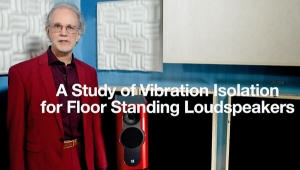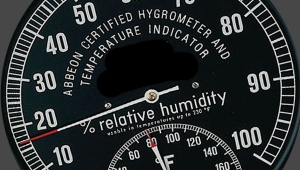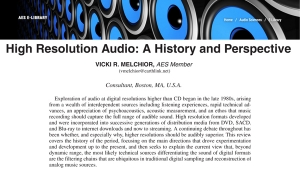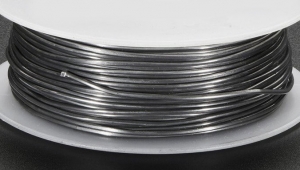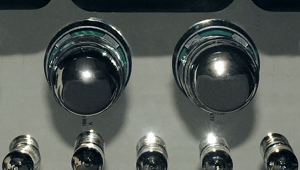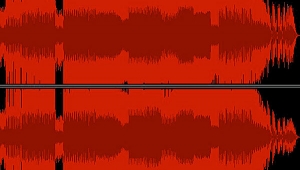| Columns Retired Columns & Blogs |
"Vat do you zink of all my toops?"
Pollock, Rothko, Amperex, and Sylvania? Last spring I went to a contemporary art show out on Chicago's Navy Pier. I wanted to get away from things with wires and knobs—you know, rub elbows with Chicago's better-dressed, sip some wine, maybe practice talking about artistic creations that I usually don't understand ("It's so brutally honest...yet, somehow, still deceptive"). But there's no rest for the weary, confused audiophile. Along with artists, paintings, and sculptures from all over the world, thousands of vacuum tubes had descended on the Pier.
Footnote 1: Damien Hirst won the prestigious 1995 Turner Prize for this piece. I just made up the one that used breath mints. (What's that? "Keep my day job"?)
I was so surprised when I first saw them, I said out loud, "What's with all the tubes?"
Someone heard me. "Ah, ze toops," said a deep German voice. "Zey eggspress ze ambivalenz of our modern technological zitz-u-a-tion."
Uhhhh. I felt like Beavis at a lecture on differential geometry. Once again, I was baffled by contemporary art: Damien Hirst's cow, sliced in half, floating in two glass tanks of formaldehyde? (His'n'hers?) Piles of breath mints arranged on the floor of a squash court? (footnote 1). Nein, Danke. And now I was supposed to believe this huge pile of tubes and electronic parts had something to do with modern life? Sure, if you're into DIY stuff.
"And vat do you zink of all my toops?" the man asked.
My toops? This was the artist himself, and he wanted an answer. He reminded me of Dieter, host of Saturday Night Live's "Sprockets!"—thin, pale, and dressed in black, with that air of say-something-important-or-I'll-mock-you. Here was my chance:
"Well...um...they're brutally...no...they're kind of...um...." I gave up: "They're really neat!"
They were—this was art for audiophiles and gadget-heads. Dieter and a few others were showing sculptures built exclusively out of parts from old amplifiers, radios, and TVs. At first they looked merely like piles of electronic junk, but after a moment or two they snapped into focus. There was a cute little doggy with a motorized tail, and on the wall behind it a large phoenix looked out over all the art-lovers. Some of the pieces, however, were supposed to be abstract. What first caught my attention was a 5'-high pile of parts with several small, working televisions buried inside it. Through the wires and components you could see video loops showing people's faces looking up, down, and around. They seemed to be thinking, "Oh no! I'm trapped in zis technological zitz-u-a-tion!" All I could think of was the opening sequence of The Brady Bunch. Talk about angst.
Whatever they meant, these pieces were covered with vacuum tubes. Dieter's rule was, every tube socket must be filled—and there were lots of sockets in all those skeletons of radios and TVs. With a 300B hovering over her noggin, Lassie looked as if she was mesmerized by some great idea. And that phoenix just sparkled as the bright halogen lights glinted off all those tubes. Obviously, Dieter had discovered what all audiophiles know: Tubes look great. All those shining cylinders of low technology were visually irresistible. Most of these art-lovers hadn't seen audio tubes like these in years—perhaps ever. Many were drawn in as if by old friends. You had to look at them.
I instantly recognized that warm, reassuring quality all tube-lovers know. Amid all the honesty and brutality of contemporary art, these pieces reminded me of my beloved Dyna IIIs. Late at night, after too many hours at the computer, there's nothing much better than dimming the lights, turning up the volume, and watching those filaments glow. Sometimes they look like a miniature skyline, as if my listening chair were a window seat on a red-eye flight to the Twin Cities. There's Minneapolis on the left, St. Paul on the right, and Godzilla (aka Bruce, the heat-loving cat) curled up in between. Evil sleeps while civilization twinkles into the night.
Footnote 1: Damien Hirst won the prestigious 1995 Turner Prize for this piece. I just made up the one that used breath mints. (What's that? "Keep my day job"?)
- Log in or register to post comments
